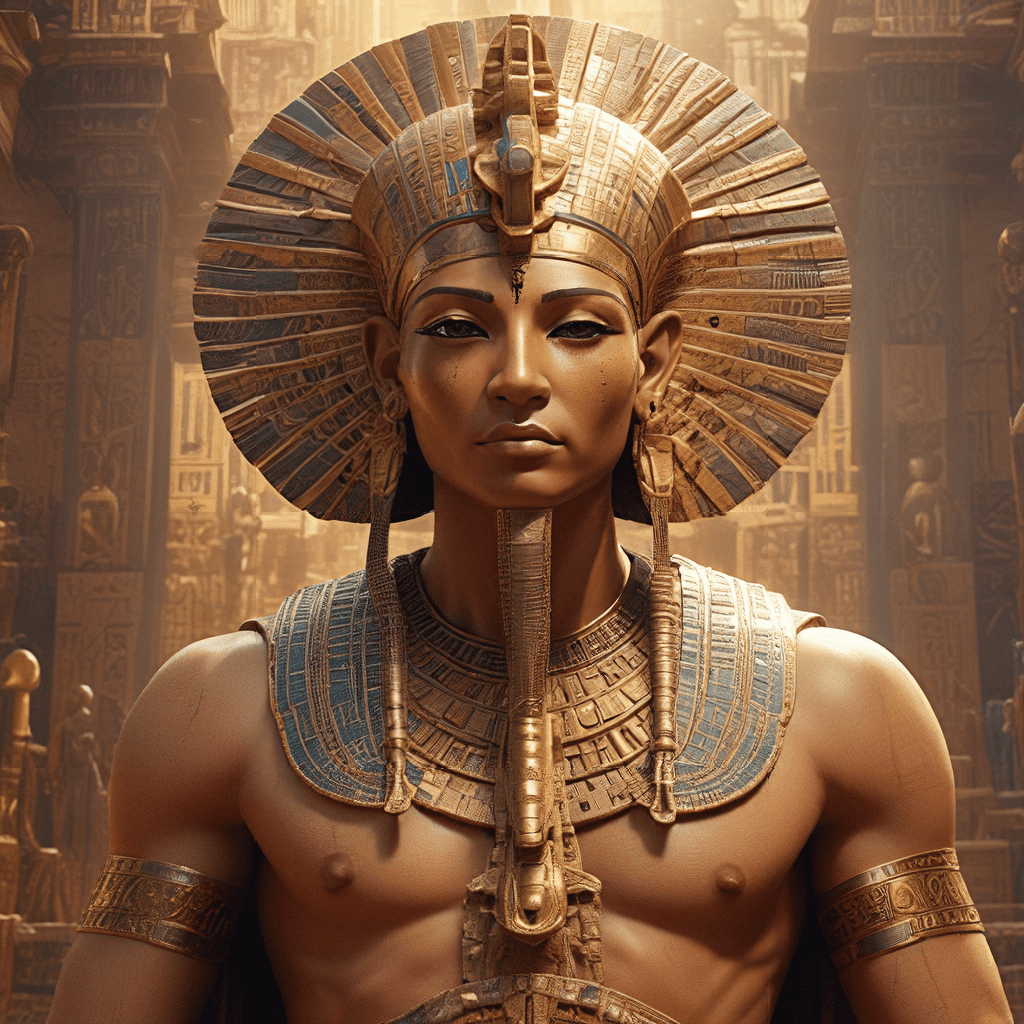Ptah: The God of Transformation
1. Introduction: The Importance of Ptah in Egyptian Mythology
In the vast pantheon of ancient Egyptian deities, Ptah holds a prominent position as the creator god and the patron of craftspeople. He was revered as the divine architect, the one who shaped the universe from primordial chaos, and the one who bestowed upon humanity the skills to build, craft, and innovate. His influence extended beyond the realm of creation, encompassing the concepts of transformation, manifestation, and the power of thought and speech.
Ptah was deeply embedded in the fabric of Egyptian religious life. Temples dedicated to him were found throughout the land, and his image adorned countless artifacts and monuments. The ancient Egyptians believed that Ptah, through his creative energy, was responsible for not only the physical world but also for the very essence of life itself. He was seen as the embodiment of divine order and the source of all knowledge and wisdom.
2. Ptah: The Creator God
Ptah’s role as the creator god is central to Egyptian mythology. He was believed to be the “first cause” of creation, the divine being who brought the universe into existence from nothingness. This concept was often portrayed through the “Heart of Ptah,” a powerful symbol representing his divine intellect and creative power.
The “Heart of Ptah” was seen as the source of all creation, containing the blueprints and divine plans for the universe. Through this “Heart,” Ptah was thought to have brought about the physical world through his thoughts and words. The Egyptians believed that Ptah’s pronouncements, spoken or unspoken, held immense power, capable of shaping reality and giving life to the cosmos. His creative energy was seen as flowing from the “Heart of Ptah” and manifesting through the spoken word, demonstrating the importance of thought and language in the divine process of creation.
3. Ptah: The Patron of Craftsmen
Ptah’s association with craftsmanship stems from his role as the divine architect. He was credited with the creation of tools, materials, and techniques used by artisans and builders. His skills were seen as the source of human ingenuity and craftsmanship. He was the divine inspiration behind the intricate artistry and engineering feats found in Egyptian architecture, sculptures, and jewelry.
The ancient Egyptians, deeply reliant on craftsmanship and skilled labor, worshipped Ptah as their divine patron. They believed that Ptah’s blessings were essential for successful construction projects, for the creation of beautiful artifacts, and for the success of their livelihoods. The relationship between Ptah and the skilled trades was so profound that many Egyptian artisans believed they were channeling his creative energy during their work.
4. Ptah’s Divine Attributes
Ptah was often depicted in a mummified form, symbolizing his eternal existence and power over life and death. The serpent, a creature associated with ancient wisdom and transformation, was also a significant symbol of Ptah. The serpent represented the cyclical nature of creation and destruction, reflecting Ptah’s ability to bring new life from the ashes of the old.
Another important symbol associated with Ptah was the Ankh, the key of life. The Ankh was often depicted in Ptah’s hand, representing his power over life, health, and prosperity. The Ankh served as a reminder of Ptah’s ability to bestow these blessings upon humanity, highlighting his role as a benevolent creator and protector.
5. Ptah’s Family: Wife, Children, and Companions
Ptah’s wife was Sekhmet, the fierce lion goddess, who embodied the destructive power of the sun and the terrifying aspects of the divine. Their union symbolized the duality of creation and destruction, emphasizing the cyclical nature of life and the balance between order and chaos.
Ptah and Sekhmet’s son, Imhotep was revered as a divine healer, architect, and sage, showcasing the power of knowledge and wisdom in the creation and transformation of the world. Imhotep’s connection to Ptah reflected the importance of craftsmanship and intellect in the divine plan.
Ptah was also associated with the goddess Ma’at, who personified truth and cosmic order. Ma’at’s role in maintaining balance and harmony represented the importance of divine justice and the consequences of deviating from the natural order.
6. The Temple of Ptah in Memphis
Memphis, the ancient capital of Egypt, held immense religious and political significance. It was the site of the prominent Temple of Ptah, a testament to the god’s power and influence. The temple was a symbol of Ptah’s connection to the earthly realm and a place where the divine and the mortal interacted.
The Temple of Ptah was a center of worship, ritual, and offerings. It housed the sacred statues of Ptah, Sekhmet, and Imhotep. The temple’s architecture, elaborate decorations, and intricate rituals were all intended to honor Ptah and showcase his divine power. The temple served as a place for the Egyptians to seek Ptah’s blessings, offer prayers, and celebrate his creative power.
7. Ptah in Art and Architecture
Ptah’s image was a prominent feature in Egyptian art. He was often depicted as a mummified figure, wearing a ceremonial beard and a conical headdress. His features were often serene and majestic, reflecting his divine authority and power. Ptah was also portrayed in sculptures, paintings, and reliefs, often alongside his wife Sekhmet and his son Imhotep.
The representation of Ptah in sculptures varied in style and scale. Some sculptures depict him as a seated figure, a powerful and imposing presence. Others portray him in a standing position, holding the Ankh and other symbols of his divine power. These sculptures served as reminders of Ptah’s role as the creator, the protector, and the source of life itself.




